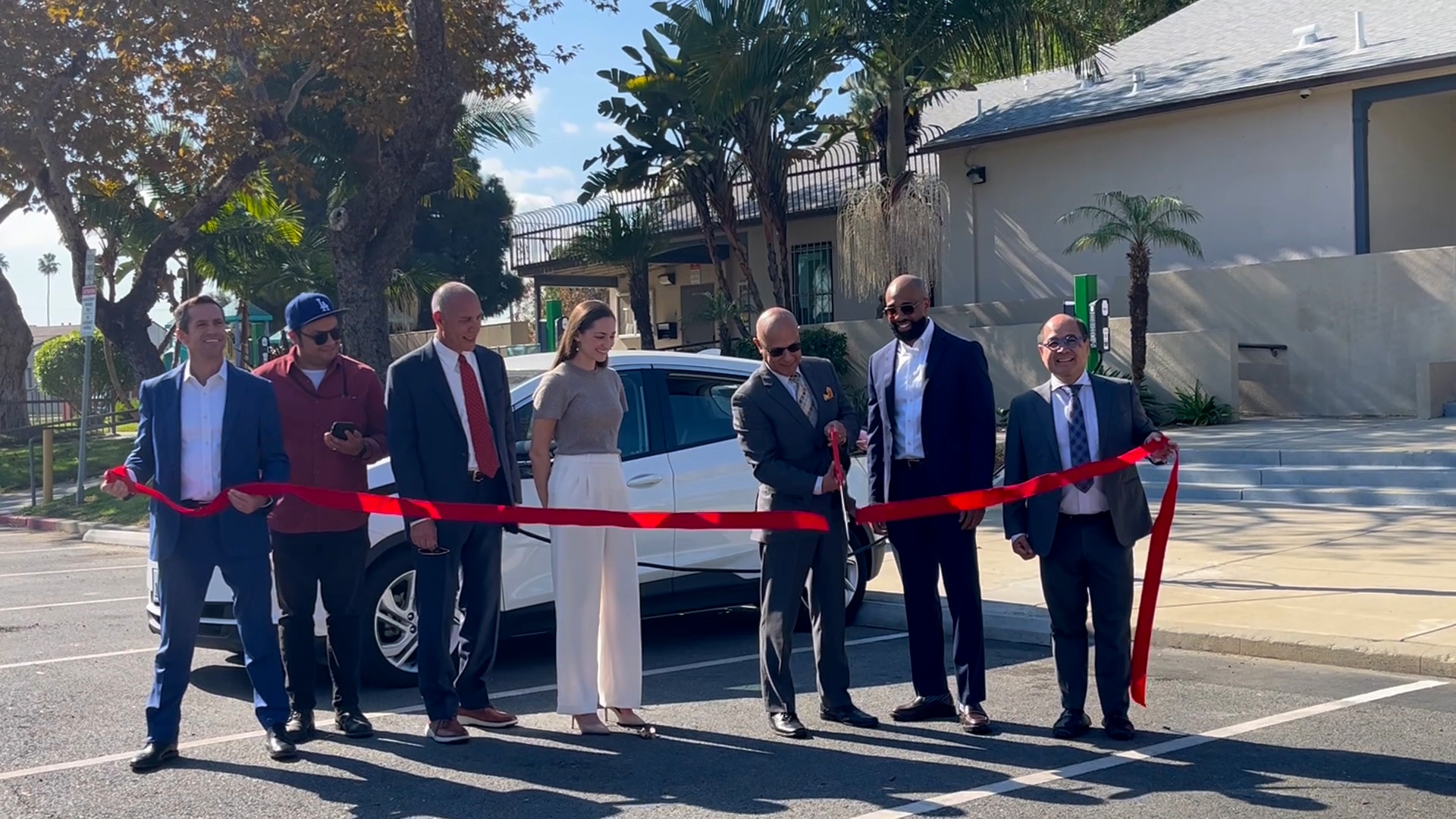Schnitzer Steel Industries, Inc. Selects PowerFlex – an EDF Renewables Company for Onsite Battery Energy Storage System

No-Capital Cost Transaction Lowers Energy Cost and Mitigates Grid Strain
SAN DIEGO (Sept. 8, 2021) — PowerFlex - an EDF Renewables Company was recently selected by Schnitzer Steel Industries, Inc. to design, build, and operate a 1,600 kilowatt(kW)/5,567 kilowatt-hour (kWh) Battery Energy Storage System (BESS) at its Oakland, California facility to lower operational electricity costs by leveraging best practices in energy demand management.
The battery will charge during periods of the day when electricity demand on the grid is lowestand renewable energy generating assets are actively powering the grid, thereby using the cleanest available grid power supplied by East Bay Community Energy, the local CommunityChoice Energy provider. And likewise, the BESS will discharge during periods of high onsiteconsumption when less renewable energy is available on the grid. This shifting both eases the strain on the grid and mitigates spikes in energy usage thereby lowering utility demand charges for the Schnitzer facility.
The battery storage project will operate under a no-capital cost, shared savings agreement — a performance-based contract whereby PowerFlex is only paid based on the actual utility billsavings realized by Schnitzer as a result of the battery operation. Schnitzer has no fixed payments and bears no performance risk on the operation of the system.
“This is an incredibly exciting project for us,” said Robert Ellsworth, Director of Sustainability, Schnitzer Steel Industries, Inc. “It’s cutting edge, a technological innovation, and one of the first of its kind for our industry, at one of our most dynamic locations. This project serves as a prime example of our commitment to sustainability, not just from a global perspective, but more importantly at a local, community level.”
Nick Chaset, Chief Executive Officer, East Bay Community Energy commented, “In order to reduce emissions and lower electricity costs in California, we need more renewables online that can be deployed on demand. East Bay Community Energy continues to work towards that goal for our customers, having contracted 170+ MW of new battery storage projects to date.”
Chaset continued, “Schnitzer has been a valuable and like-minded customer and partner to EBCE from our start, demonstrated through their voluntary selection of our 100% carbon-free option for their electricity use in Oakland. This new 1,600 kW battery installation by PowerFlex further demonstrates their continued commitment and vision, allowing them to reduce both cost and emissions in a cutting-edge fashion. We hope this project will act as a model for other businesses, far and near.”
Michael Robinson, Director of Microgrids and Strategic Market Development at PowerFlex commented, “PowerFlex is proud to partner with Schnitzer to deliver a storage solution that reduces energy costs while helping alleviate the strain on California’s grid. The BESS will optimize grid-connected operations by allowing Schnitzer to draw from the stored energy during the utility’s expensive evening on-peak period. Utility costs can further be reduced by discharging the battery to mitigate spikes in usage thereby lowering demand charges. The BESS solution is part of a portfolio of storage projects that PowerFlex is deploying with public and private entities throughout California.”
The battery leverages EDF’s Energy Management System (EMS) using real-time data to allow for improvements in energy consumption management along with advanced forecasting tools to charge and discharge in a fashion which reduces the peak levels of consumption thereby reducing overall peak demand kW and cost. Schnitzer’s Oakland facility processes and recyclesferrous and nonferrous metals, creating both substantial and variable demand for electricity.The project is expected to leverage Pacific Gas & Electric’s (PG&E) “Option-S” pilot program, arate tariff specifically designed to increase the adoption of energy storage and facilitate the shiftof solar energy to the evening period. This model aims to mitigate California’s “Duck Curve,” ashape driven by mass adoption of solar energy and the resulting peak demand once the sunbegins to set.
More News
.jpg)
PowerFlex Surpasses 500 MW Solar, 50 MWh Energy Storage, and 50,000 EV Chargers Under Management

.jpg)
PowerFlex Surpasses 500 MW Solar, 50 MWh Energy Storage, and 50,000 EV Chargers Under Management


PowerFlex, LA County ISD, and LACDA Celebrate New EV Charging at Carmelitos Public Housing Development to Expand Equitable Access in Long Beach


PowerFlex, LA County ISD, and LACDA Celebrate New EV Charging at Carmelitos Public Housing Development to Expand Equitable Access in Long Beach

